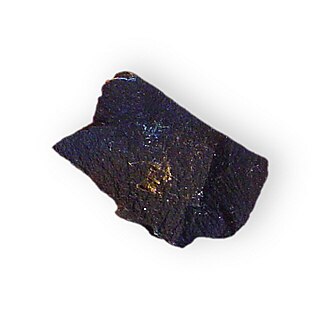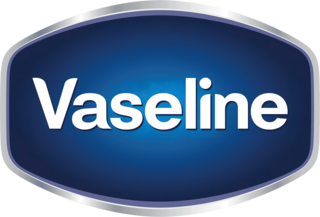
Paraffin wax is a soft colorless solid derived from petroleum, coal, or oil shale that consists of a mixture of hydrocarbon molecules containing between 20 and 40 carbon atoms. It is solid at room temperature and begins to melt above approximately 37 °C (99 °F), and its boiling point is above 370 °C (698 °F). Common applications for paraffin wax include lubrication, electrical insulation, and candles; dyed paraffin wax can be made into crayons. It is distinct from kerosene and other petroleum products that are sometimes called paraffin.

Waxes are a diverse class of organic compounds that are lipophilic, malleable solids near ambient temperatures. They include higher alkanes and lipids, typically with melting points above about 40 °C (104 °F), melting to give low viscosity liquids. Waxes are insoluble in water but soluble in nonpolar organic solvents such as hexane, benzene and chloroform. Natural waxes of different types are produced by plants and animals and occur in petroleum.

Lanolin, also called wool fat, wool yolk, wool wax, sheep grease, or wool grease, is a wax secreted by the sebaceous glands of wool-bearing animals. Lanolin used by humans comes from domestic sheep breeds that are raised specifically for their wool. Historically, many pharmacopoeias have referred to lanolin as wool fat ; however, as lanolin lacks glycerides, it is not a true fat. Lanolin primarily consists of sterol esters instead. Lanolin's waterproofing property aids sheep in shedding water from their coats. Certain breeds of sheep produce large amounts of lanolin.

Mineral oil is any of various colorless, odorless, light mixtures of higher alkanes from a mineral source, particularly a distillate of petroleum, as distinct from usually edible vegetable oils.

Lip balm or lip salve is a wax-like substance applied typically to the lips to moisturize and relieve chapped or dry lips, angular cheilitis, stomatitis, or cold sores. Lip balm often contains beeswax or carnauba wax, camphor, cetyl alcohol, lanolin, paraffin, and petrolatum, among other ingredients. Some varieties contain dyes, flavor, fragrance, phenol, salicylic acid, and sunscreen.

A moisturizer, or emollient, is a cosmetic preparation used for protecting, moisturizing, and lubricating the skin. These functions are normally performed by sebum produced by healthy skin. The word "emollient" is derived from the Latin verb mollire, to soften.

Ozokerite or ozocerite, archaically referred to as earthwax or earth wax, is a naturally occurring odoriferous mineral wax or paraffin found in many localities. Lacking a definite composition and crystalline structure, it is not considered a mineral but only a mineraloid. The name was coined from Greek elements Όζω ozο, to stink, and κηρός keros, wax.

Baby oil is, in general terms, an inert oil for the purpose of keeping skin soft and supple. It is often used on babies for the purpose of maintaining "baby-soft" skin, but it is also often used by adults for skincare and massage.
Calumet Specialty Products Partners, L.P. is a publicly traded U.S.-based company that was incorporated in 1919. It specializes in the manufacture of lubricating oils, solvents, waxes, packaged and synthetic specialty products, fuels and fuel-related products. The company operates 12 production, blending, and packaging facilities across North America. This includes locations in Princeton, Cotton Valley, and Shreveport, Louisiana; Burnham, Illinois; Dickinson, Texas; Muncie, Indiana; Karns City, Pennsylvania; and Great Falls, Montana. Calumet's specialized hydrocarbon products are distributed around the world to approximately 2,700 global customers.
Microcrystalline waxes are a type of wax produced by de-oiling petrolatum, as part of the petroleum refining process. In contrast to the more familiar paraffin wax which contains mostly unbranched alkanes, microcrystalline wax contains a higher percentage of isoparaffinic (branched) hydrocarbons and naphthenic hydrocarbons. It is characterized by the fineness of its crystals in contrast to the larger crystal of paraffin wax. It consists of high molecular weight saturated aliphatic hydrocarbons. It is generally darker, more viscous, denser, tackier and more elastic than paraffin waxes, and has a higher molecular weight and melting point. The elastic and adhesive characteristics of microcrystalline waxes are related to the non-straight chain components which they contain. Typical microcrystalline wax crystal structure is small and thin, making them more flexible than paraffin wax. It is commonly used in cosmetic formulations.

Xeroderma, xerosis or xerosis cutis, or simply dry skin, is a skin condition characterized by excessively dry skin.
An oil is any nonpolar chemical substance that is composed primarily of hydrocarbons and is hydrophobic and lipophilic. Oils are usually flammable and surface active. Most oils are unsaturated lipids that are liquid at room temperature.

Robert Augustus Chesebrough was an American chemist who discovered petroleum jelly—which he marketed as Vaseline—and founder of the Chesebrough Manufacturing Company.

Vaseline is an American brand of petroleum jelly-based products owned by transnational company Unilever. Products include plain petroleum jelly and a selection of skin creams, soaps, lotions, cleansers, and deodorants.

Liquid paraffin, also known as paraffinum liquidum, paraffin oil, liquid paraffin oil or Russian mineral oil, is a very highly refined mineral oil used in cosmetics and medicine. Cosmetic or medicinal liquid paraffin should not be confused with the paraffin used as a fuel. The generic sense of paraffin meaning alkane led to regional differences for the meanings of both paraffin and paraffin oil. It is a transparent, colorless, nearly odorless, and oily liquid that is composed of saturated hydrocarbons derived from petroleum.
Crude oil is extracted from the bedrock before being processed in several stages, removing natural contaminants and undesirable hydrocarbons. This separation process produces mineral oil, which can in turn be denoted as paraffinic, naphthenic or aromatic. The differences between these different types of oils are not clear-cut, but mainly depend on the predominant hydrocarbon types in the oil. Paraffinic oil, for example, contains primarily higher alkanes, whereas naphthenic oils have a high share of cyclic alkanes in the mixture.
Chesebrough Manufacturing Company was an oil company, founded in 1859, which produced petroleum jelly or Vaseline, which was marketed with the brand name Luxor. Robert Augustus Chesebrough, a chemist who started the company, was interested in marketing oil products for medicinal use. He produced the first petroleum jelly by refining so-called rod wax, a paraffin-like substance that formed on oil drilling rigs, using heat and filtration. He named the substance "Vaseline", from the German word for water (Wasser) and the Greek word for oil (olion). Vaseline was patented in the United States in 1872 and England in 1877.
Hairstyle products are used to change the texture and/or shape of hair.

Aquaphor is a brand of over-the-counter (OTC) skin care ointments manufactured by Beiersdorf Inc., an affiliate of Beiersdorf AG. Aquaphor is offered in four product ranges: There are two skin protectant ointments. Aquaphor Original Ointment, used as a compounding agent and Aquaphor Advanced Therapy Healing Ointment, sold in mass retail outlets. The other product ranges include: Aquaphor Lip Repair and Lip Repair + Protect SPF 30, and Aquaphor Baby.




















